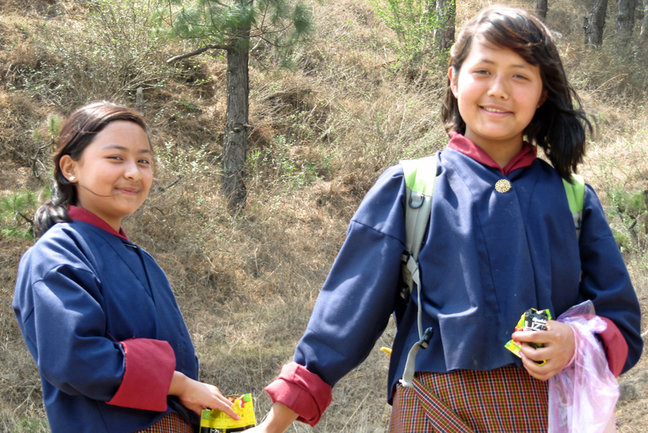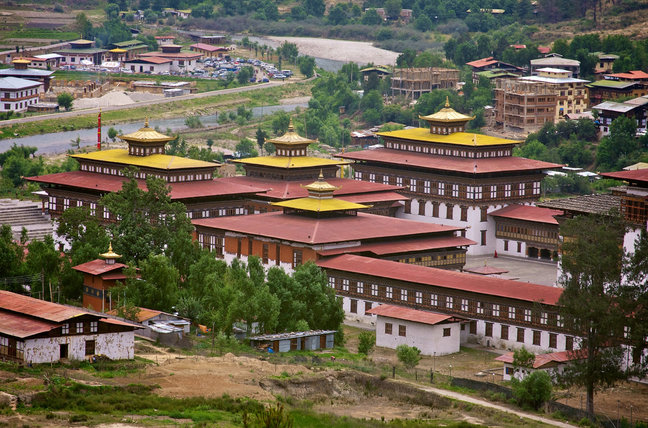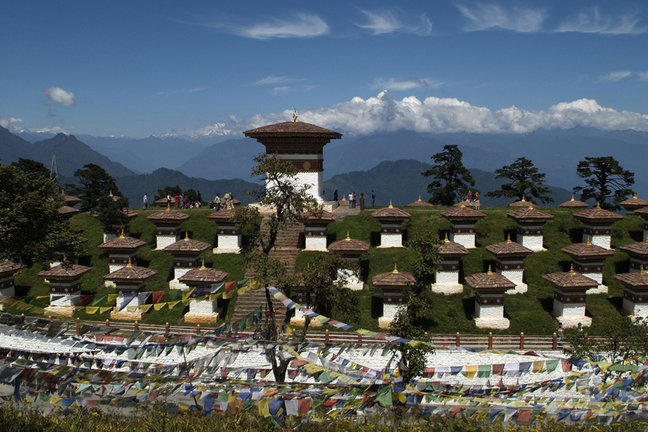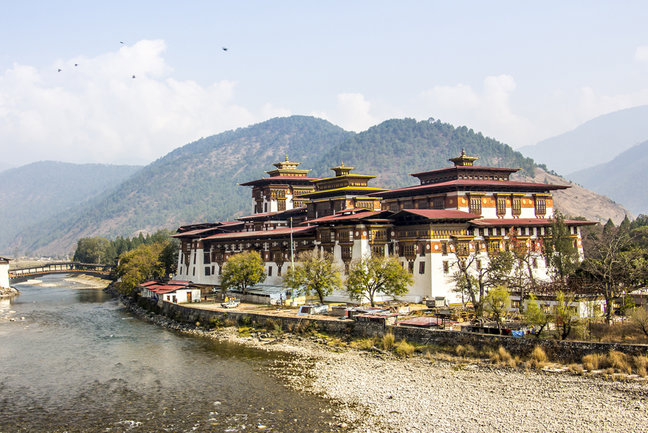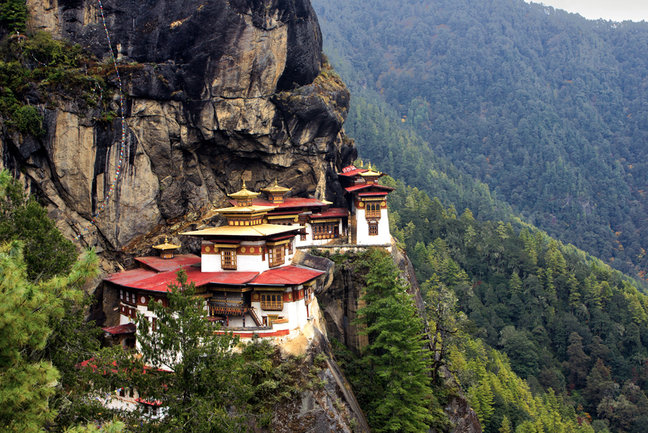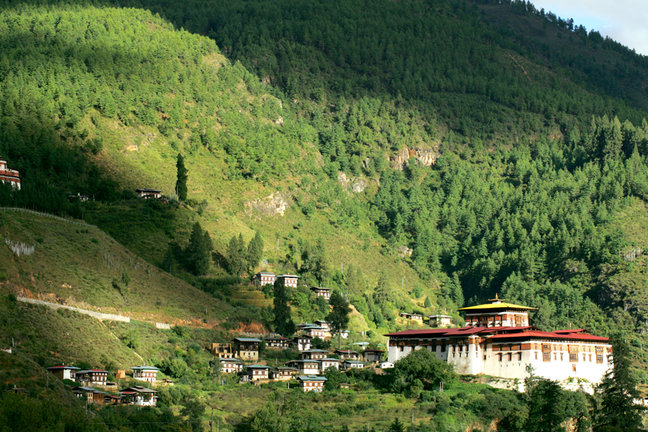Please enter your username and password to logon to the member pages

Classic Western Bhutan Tour
Classic Western Bhutan Tour Overview
This holiday takes in the best of Western Bhutan, its culture and tradition, towering fortresses, temples and monasteries. Lush green valleys and hills dotted with prayer wheels and flags, this cultural tour includes short hikes, visits to historical places and meeting local people. End your adventure with a spectacular hike to the Tiger’s NestExperience Bhutan's unique culture and traditions
Take in spectacular Himalayan scenery
Visit Punakha's Dzong
Trek in pristine valleys
Climb up to Tiger's Nest Monastery in Paro
Day 1: Arrival
After a dramatic landing at Paro Airport, meet up with your guide and driver and drive to Thimphu.Thimphu is a bustling town on the banks of the Thimphu Chhu and set gloriously in the hills of the Thimphu valley. It is home to the Bhutanese Royal Family, the Royal Government and several foreign missions. Thimphu is the only capital city in the world that has no MacDonald, Starbucks, bill boards and traffic lights. A must see city that has truly set an example.
Afternoon sightseeing in Thimphu Memorial Chorten Chorten are memorial structures designed to evoke the same perfect symmetry and elegance of the Buddha himself, and it is traditionally good luck to pass them on the left. This particular chorten was constructed in 1974 as a memorial for the third King of the country, King Jigme Dorji Wangchuck, who is widely regarded as the father of modern Bhutan. People from all walks of life come and worship for the sentient beings.
Kuenschholing View Point (Largest sitting Buddha) A place from where you can get a good overview of the Thimphu valley is from the Buddha point (Kuensel Phodrang). It is again a short drive from the town. You can pay your obeisance and offer prayers to the Buddha, the largest statue in the country and then walk around and take a glimpse of the valley.
Tashichho Dzong (Fortress) The names means - Means Fortress of Glorious Religion. It was built in 1641 and was reconstructed into its present structure in the year 1962-1969. It houses the secretariat building, the throne room and the office of the king, and the central monk body. You can be part of the ceremonial national flag recess parade, performed every evening at 5 pm by the Royal Bhutan Police guards in its traditional finest grandeur. Sometimes if luck favours you could see the king coming out of his office on his way to his palace. Overnight in Thimphu.
Day 2: Thimphu touring
After an early breakfast, take a drive to the base of the Tango Monastery where your hike will beginLocated at the farthest region north of Thimphu, It is roughly 14 kilometres away from Thimphu town. Following the trail, the walk uphill takes about 40 minutes to reach the monastery. The word Tango literally means ‘horse head’ and is derived from the deity Tandin (Hayagriva) that features the head of a horse. The revered place of Hayagriva was first recognized by Guru Rinpoche in the eighth century. It is now the Buddhist College in Bhutan.
Return to Thimphu to visit the Traditional Hand Made Paper Factory. The handmade paper making craft in Bhutan stemmed from the age old tradition originated in 8th century of Bhutanese history. It began as domestic ancient activity which is still in practice in remote areas.
Afterwards visit Bhutan’s first ever Craft Bazaar. A spectacle of traditional bamboo huts, aligned neatly with the products sourced mostly from rural areas, the bazaar aims to promote Bhutan’s craft industry by creating a viable market, which in turn acts to preserve and promote Bhutan’s unique culture. The initiative is also expected to bring about equitable socio-economic development in the country.
Visit the mini zoo just above the town, containing the Takin, the very rare animal found exclusively in Bhutan and parts of China and possibly one of the most quirky and strangest looking animals you will ever see. Overnight in Thimphu.
Day 3: Thimphu to Punakha
After breakfast drive to Punakha, the former capital of the country, over the Dochu La pass offering stunning views of all the Eastern Himalayas. This pass at 3,048m/10,000ft is marked by 108 chortens. The pass is a popular location as it offers a stunning 360 degree panoramic view of Himalayan mountain range. The view is especially scenic on clear, winter days with snowcapped mountains forming a majestic backdrop to the tranquility of the 108 chortens gracing the mountain pass.Punakha served as the capital of the country from 1637 to 1907 and the first national assembly was hosted here in 1953. It has the second oldest and second largest dzong in Bhutan and one of the most majestic structures in the country. On October 13, 2011, the wedding of the 5th King of Bhutan was held at the Punakha Dzong.
Walk through the rice paddies to visit the Chimi Lhakhang, a delightful small temple built by Drukpa Kunley. Known as the The Divine Madman', Drukpa Kunley was a 15th century Bhutanese lama and is Bhutan's most popular saint and one of the most important figures in Bhutanese folklore. His style of teaching was thought shocking, insulting and including obscene behaviour. His outrageous actions and sexual antics were a deliberate method of provoking people to discard preconceptions. In the temple you will receive a blessing from his wooden phallus. Wooden phalluses are often found hanging in the four corners of the houses and also phalluses are painted on the walls of houses. It is the common belief that this helps in driving away evil spirits.
Visit the fabulous Punakha Dzong, one of the most spectacular and important fortress in the kingdom. Built in 1637 this majestic fortress is built in-between two rivers. Until the time of second king it served as a seat of the king. Now it is the winter capital of the central monk body. Every year in the month of February or March the Punakha Festival is held in this fortress. Longest Suspension Bridge - Located close to the fortress, the longest suspension bridge in Bhutan connects a village to the paved road. The walk through the bridge will provide a scenic view of the river and the valley. Overnight in Punakha.
Day 4: Punakha Festival
Punakha Tshechu, as all Tshechu festivals, honours Padmasambhawa, also known as Guru Rimpoche, the precious yogi and saint who is credited with having introduced Tantric Buddhism throughout the Himalayas. The festival’s masked dances are performed by monks clad in colourful brocade attire and permeated by chants and reading of Buddhist scripts. The culmination of festival constitutes the unfolding of a huge cloth thangka, a sacred scroll, depicting Padmasmabhawa and imagery from Buddhist pantheon. Overnight in Punakha.Day 5: Drive from Punakha to Gangtey
After breakfast, drive to Gangtey. Visit Gangtey Monastery and take a hike through the Gangtey Nature Trail & Crane information centre. The valley of Gangtey/Phobjikha is well known as the winter home of the black necked cranes. Bhutan is home to around six hundred black necked cranes with Phobjikha being one of the popular places that the birds migrate to in the winter months from the Tibetan plateau. These elegant and shy birds can be observed from early November to end of March. Overlooking the Phobjikha valley is the Gangtey Goenpa, an old monastery that dates back to the 17th century. Overnight at Gangtey.Day 6: Drive from Gangtey to Paro
Early morning drive to Paro. This beautiful valley is home to many of Bhutan’s oldest monasteries and temples. The valley is also home to Mount Jumolhari (7,300m/24090ft) situated at the northern end of the valley whose glacier water forms the Pachu flowing through the valley.Sightseeing in Paro. Visit the National Museum to see some of Bhutan’s cultural treasures, Rimpung Dzong, Kichu Lhakhang, Drukgyal Dzong and in the evening take a stroll in Paro town. Overnight in Paro.
Day 7: The spectacular trek to Tiger's Nest Monastery
Taktsang Goemba or the Tiger’s Nest Monastery Trek. This is Bhutan’s most recognizable cultural icon perched 800m/2640ft up a seemingly sheer cliff. Although it was tragically and mysteriously consumed by fire in April 1998 it has now been restored to its former glory. It is believed that in the 8th century, the great tantric master Guru Rimopche/ Padmasambhava (2nd Buddha) flew on the back of a tigress to the site where the monastery now stands. The hike takes approximately one hour to reach the cafeteria and another hour to reach the heart of the monaster. Most of the route is through wonderfully cool and sheltered oak forests. There is a tea house half way for a break. After the tea house the path is slightly steeper and open with one area of exposed steps. It is a route that anybody of reasonable fitness can make but those who suffer from vertigo might prefer to wait at the tea house. Start early to avoid the hot sun and remember to bring a hat.Farm House: Picturesque farm houses dot the valley amongst fields and hillsides. We welcome you to enjoy the hospitality of the Paro farmers. Thrill yourself as the farmers welcome you to their homes with genuine smiles. The two to three-storied Bhutanese farm houses are handsome in appearance, with colorfully decorated outer walls and lintels, and are traditionally built. A visit to a farm house gives an interesting glimpse into the lifestyle of a farming family. You can cook, eat and take hot stone bath in the farm house. Overnight in Paro.

